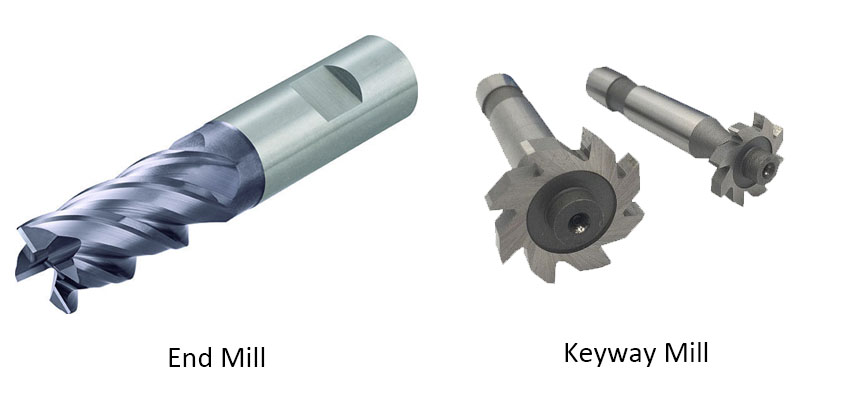Some people can’t tell the difference between end mills and keyway milling cutters. Although their use is similar in some scenarios, it does not mean that they can replace each other. Today, I will give you a popular science: end mills and keyway milling. What is the difference between knives? How to distinguish and use different end mills?
What Is The Difference Between An End Mill And A Keyway Mill?

1. Different Uses
Vertical milling cutters are used to process plane or cylindrical surfaces, and their outer diameters are relatively loose, while keyway milling cutters are used to process keyways, and their outer diameters directly affect the matching quality of keyways and keyways, so the tolerance is tighter.
2. The Number Of Teeth Is Different
End mills generally have more than three teeth, and keyway milling cutters generally have two teeth.
3. The Difference Of The Edge
In order to improve work efficiency, end mills have multiple margins, and the larger the diameter, the more margins; keyway milling cutters generally have 2 margins, mainly to perform axial feed like a drill bit.
4. The Feed Is Different
The end mill cannot enter the tool in the axial direction, and must move in the radial direction to enter the tool axially at the same time; the keyway milling cutter can enter the tool in the axial direction, which is equivalent to a drill bit and can drill a flat-bottomed hole.
How To Distinguish And Use Different End Mills?
1. End Mills With Different Number Of Blades And Blade Lengths
The number of flutes is selected according to the cutting method of the end mill.
For example, when performing groove cutting with the same cutting width as the tool diameter, a larger chip pocket is required. In this case, a 2-flute end mill is generally selected. When performing side cutting with a small cutting width, the rigidity of the tool should be given priority and a multi-edge end mill should be selected.
Choice of blade length
Select the optimum end mill edge length according to the machining shape such as the depth of the groove shape. If an end mill with an excessively long cutting edge is selected by focusing on the number of regrindings, chatter vibration will occur, which will make it impossible to fully utilize the characteristics of the end mill, making it difficult to achieve a high-precision finish surface and other adverse effects.
2. End Mills With Different Helix Angles
The larger the helix angle of the end mill, the longer the contact length between the workpiece and the cutting edge. This reduces the load on the cutting edge per unit length, thereby extending tool life. However, at the same time, the cutting resistance will increase, so it is necessary to consider the use of a tool holder with high clamping rigidity.
For difficult-to-cut materials such as stainless steel with low thermal conductivity and great influence on the heat of the cutting edge, the use of a large helix angle end mill for cutting will help to prolong the tool life. In addition, the characteristics of the finished surface are changed by the helix angle. For example, when smooth finishing is required, a large helix type end mill is sometimes used.
However, when using an end mill with a large helix angle, the cutting resistance will increase, and the force of the right helix angle tool to come out will also increase, so corresponding measures must be taken, such as using a holder with high clamping rigidity.
Although the rigidity of the tool can be ensured, when the workpiece rigidity is low, such as thin plate machining, a small helix type end mill is sometimes used.


